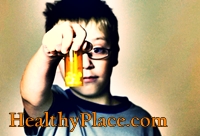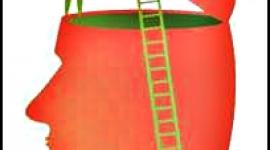Selecting the Right Medication for Your ADHD Child
Choosing the right ADHD treatment for your child is very important. Here's what parents should consider when selecting an ADHD medication.
You have many options in types of medications, doses and treatment strategies.
 If your child has been diagnosed with attention deficit disorder, you may be facing decisions about ADHD medications. Fortunately, you have many options, not only for types of medications, but also for doses and treatment strategies.
If your child has been diagnosed with attention deficit disorder, you may be facing decisions about ADHD medications. Fortunately, you have many options, not only for types of medications, but also for doses and treatment strategies.
First, it's important to know a few things about ADHD treatment in general. In the largest study ever of ADHD treatments, researchers funded by the National Institute of Mental Health found in 1999 that the most effective treatment for ADHD was a combination of behavioral therapy and ADHD medications. In March 2005, researchers from the from the University at Buffalo SUNY found that behavioral modification therapy allowed doctors to significantly lower the doses of ADHD medications that children need to take.
So, while ADHD medications can clearly help many children manage symptoms, the drugs may be most effective -- with the fewest side effects -- when used in combination with behavioral therapy.
How do you know which ADHD medication is right for your child?
Most experts advise parents to work closely with their child's doctor, and understand that finding the best dose and ADHD medication may be a gradual process.
"Treating ADHD is more an art than a science," says Richard Sogn, MD, a clinical specialist in ADD/ADHD. After all, every child is unique, and every child's ADHD symptoms are slightly different. Finding the medication that works best -- or the combination of drugs -- is a process.
With all ADHD medications, the goal is to make your child's day go more smoothly, more productively. Until recent years, this was done by giving a child two or three doses of the stimulant Ritalin, which is considered a short-acting medication -- it wears off after three or four hours. Many newer medications are longer-lasting -- meaning they slowly release for up to six, eight, 10, or 12 hours. Yet the short-acting drugs still have their place in managing symptoms.
While stimulants are still the mainstay of ADHD treatment, in recent years, doctors have found success in trying other drugs as well. In recent years the FDA has approved Strattera, a nonstimulant ADHD medication. Some doctors also prescribe antidepressants, although these have not yet been approved by the FDA to treat ADHD. All the drugs are generally considered safe for kids. But all can also cause side effects.
As you try to find the best ADHD medication for your child, it's important to chart any changes you notice, advises Sogn. Look for positive changes -- better focus or calmness -- as well as negative changes that could be side effects, such as lack of appetite or difficulty sleeping.
"You can expect your child to have side effects," says Sogn. "But generally those related to stimulants are easily managed. Most side effects are mild and transient."
Here is information to help you sort through your options.
Stimulant ADHD Medications
Stimulant ADHD medications work by increasing the levels of brain chemicals, like epinephrine and norepinephrine, which help transmit signals between nerves. With these medications, children are better able to focus and ignore distraction, which can help them control their own behavior. In the classroom, they may be less fidgety, less emotional, and better able to concentrate. Their relationships may also improve. They may get along better at school and at home.
There are two classes of stimulants:
- Methylphenidate-based drugs such as Ritalin, Concerta and Metadate
Over 200 studies have shown that methylphenidate is effective for the majority of ADHD children. - Amphetamine-based drugs such as Adderall and Dexedrine
These AHDH medications provide an option for kids who don't benefit from methylphenidate, or who are looking for an alternative for other reasons. The trade names include Dexedrine, Adderall, and Adderall XR.
Both types of stimulant drugs work equally well in improving ADHD symptoms, according to the American Academy of Pediatrics (AAP). Individual children, however, may respond to one better than another.
"There's no inherent advantage of one medication over another," says Steven Parker, MD, director of behavioral and developmental pediatrics at Boston Medical Center. "Most doctors start with the drug they are most comfortable with, and if it's ineffective or if there are side effects, then we try a different one." The goal is to find the drug or combination of drugs that works best for each specific child.
These stimulants are generally considered safe medications with few side effects, the AAP states in its guidelines. The side effects occur early in treatment and tend to be mild and short-lived. The most common are: decreased appetite, stomachache or headache, difficulty falling asleep, jitteriness, or social withdrawal. Most of these symptoms can be successfully reduced by adjusting the dosage or the time of day the child takes medication. From 15% to 30% of children develop tics while taking stimulants. This is a short-term side effect that goes away when the child stops taking stimulants.
Perhaps the biggest advance in ADHD stimulants is that newer versions are available in long-acting form. Here, briefly, are the pros and cons of various forms of stimulants:
Long-Acting Stimulants for ADHD
| - | Adderall XR | amphetamine | 10-12 hours |
| - | Vyvanse | lisdexamfetamine | 10-12 hours |
| - | Concerta | methylphenidate | 10-12 hours |
| - | Dexedrine spansule | amphetamine | 8-10 hours |
| - | Methylin ER | methylphenidate | 6-8 hours |
| - | Metadate ER | methylphenidate | 6-8 hours |
| - | Metadate CD | methylphenidate | 8 hours |
| - | Ritalin SR | methylphenidate | 6-8 hours |
| - | Ritalin LA | methylphenidate | 8 hours |
Because the effects of some of these drugs can last up to 10 or 12 hours, a child can take one pill in the morning, and not worry about taking another at school. Longer-acting stimulants may also help children get through after-school activities. Some children, however, may need a second dose or a shorter-acting form of a different drug if afternoons and evenings are challenging.
Short-Acting Stimulants for ADHD:
| - | Ritalin | methylphenidate | 3-4 hours |
| - | Focalin | methylphenidate | 3-4 hours |
| - | Adderall | amphetamine | 4-5 hours |
| - | Dexedrine | methylphenidate | 4-5 hours |
| - | Dextrostat | amphetamine | 4-5 hours |
These are usually taken at three- to four-hour intervals -- usually about 30 minutes before the earlier dose wears off. This means that children have to take the pills at school, either at lunchtime or another time during the day. At some schools, this is not always easy to coordinate. Often there is not a school nurse on site to give the medication, and children are not allowed to keep their own pills.
But short-acting drugs do help control many children's ADHD symptoms. Often, children might take a short-acting stimulant in the afternoon -- after the longer-acting stimulant wears off - so they can participate in after-school activities or have quieter evenings at home.
Side Effects of Stimulant ADHD Medications
Loss of appetite and weight loss are common side effects of stimulant ADHD medications. Concern for growth delay has been raised, but studies have found little or no significant delay. Children usually catch up later on. Most doctors believe in "drug holidays" during summers, although no studies have looked at this.
Stimulants are not considered to be habit forming when used to treat ADHD in children and adolescents. Also, there is no evidence that their use leads to drug abuse. However, there is a potential for abuse and addiction with any stimulant medication -- especially if that person has a history of substance abuse.
In February 2007, the U.S. Food and Drug Administration ordered drug manufacturers to add warning labels to all ADHD stimulant medications addressing cardiac and psychiatric risks associated with ADHD drugs.
Nonstimulant ADHD Medication
Individual children respond to drugs differently; a child may benefit from one drug but not another. Because some children don't benefit from stimulant drugs, doctors have turned to other medications to treat ADHD.
Strattera (Atomoxetine)
Sold under the trade name Strattera, this is the first nonstimulant ADHD medication approved by the FDA. Like the stimulants, Strattera works on the norepinephrine brain chemicals. And also like stimulant drugs, Strattera is effective in treating and controlling ADHD symptoms. However, this medication is not a controlled substance and children are less likely to abuse the drug or become dependant on it.
Strattera is given in a single dose either in the morning or afternoon. Effects last until the next dose. It may be taken with or without food. However, some evidence shows that taking it with food will decrease any stomach upsets.
Side Effects of Strattera
Overall, Strattera is well tolerated with minimal side effects, according to the AAP. It doesn't cause many of the potential side effects linked to stimulants, such as sleeplessness. The most common side effects: upset stomach, decreased appetite, nausea, dizziness, fatigue, and mood swings. Generally these side effects are not severe, and only a very small percentage of children in clinical trials testing Strattera stopped this ADHD medication due to side effects.
There have been reports of slightly decreased growth in children and teens taking Strattera. It is recommended that children and adolescents be observed, measured, and weighed periodically while on this ADHD medication. Allergic reactions are rare but do occur, usually as swelling or hives. The doctor or other health care professional should be advised immediately if anyone taking Strattera develops a skin rash, swelling, hives, or other allergic symptoms.
In 2004, Strattera began carrying a warning label that the drug should be stopped if patients showed signs of jaundice -- yellowing of the skin or whites of the eyes, a sign of liver damage. If blood tests show evidence of liver damage, the drug should also be stopped.
Antidepressants as ADHD Medications
Various types of antidepressant medications have all been shown to help children and adults with ADHD, says the AAP. These include Pamelor , Aventyl, Tofranil, Norpramin, Pertofrane, Effexor, Nardil, and Parnate. Some are better tolerated than others. Some have side effects that can be a problem.
However, antidepressants are not approved by the FDA to treat ADHD. And antidepressants are generally not as effective as stimulants or Straterra at improving attention span and concentration. Also, in 2004 the FDA determined that antidepressant medications increase the risk of suicidal thinking and behavior in children with depression and other psychiatric disorders.
Sources:
- Clinical Practice Guideline: Treatment of the School-Aged Child With Attention-Deficit/Hyperactivity Disorder, American Academy of Pediatrics, PEDIATRICS Vol. 108 No. 4 October 2001, pp. 1033-1044.
- FDA warning on ADHD medications, Feb. 2007.
- Efron, D. "Side Effects Of Methylphenidate And Dexamphetamine In Children With Attention Deficit Hyperactivity Disorder; A Double-blind, Crossover Trial," Pediatrics 100 (1997).
- Strattera website, strattera.com
next: Where Does Strattera Fit into the Treatment of ADHD?
~ adhd library articles
~ all add/adhd articles
APA Reference
Gluck, S.
(2008, November 28). Selecting the Right Medication for Your ADHD Child, HealthyPlace. Retrieved
on 2024, June 20 from https://www.healthyplace.com/adhd/articles/selecting-the-right-medication-for-your-adhd-child

